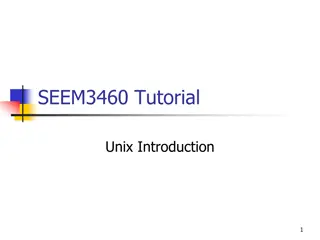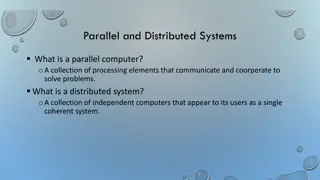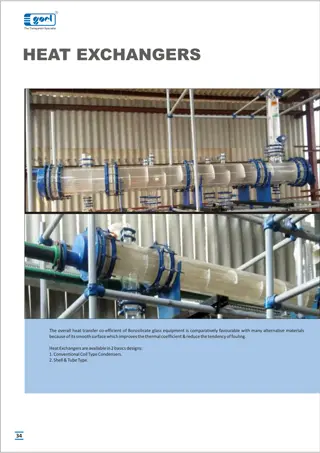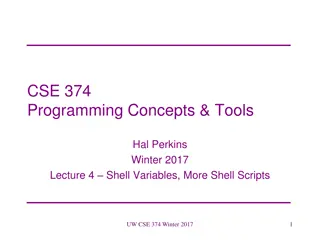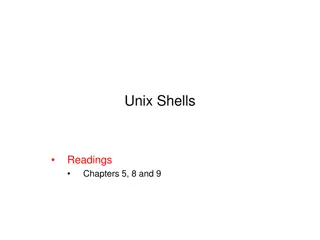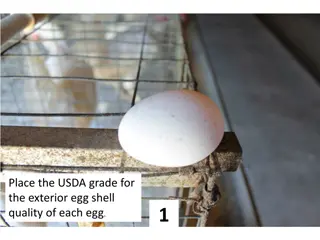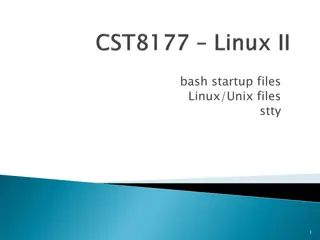Distributed Computing Systems Project: Distributed Shell Implementation
Explore the concept of a Distributed Shell in the realm of distributed computing systems, where commands can be executed on remote machines with results returned to users. The project involves building a client-server setup for a Distributed Shell, incorporating functionalities like authentication, handling multiple requests, and concurrent server operations.
Download Presentation

Please find below an Image/Link to download the presentation.
The content on the website is provided AS IS for your information and personal use only. It may not be sold, licensed, or shared on other websites without obtaining consent from the author.If you encounter any issues during the download, it is possible that the publisher has removed the file from their server.
You are allowed to download the files provided on this website for personal or commercial use, subject to the condition that they are used lawfully. All files are the property of their respective owners.
The content on the website is provided AS IS for your information and personal use only. It may not be sold, licensed, or shared on other websites without obtaining consent from the author.
E N D
Presentation Transcript
Distributed Computing Systems Project 2 Distributed Shell Due: Tuesday, February 2nd
Motivation Shell is core operating systems concept Executing commands on remote machine is core distributed systems concept Computing in the cloud (except in this case, server address is known, not a service) with results returned to user Distributed Shell
Distributed Shell Client-Server Server on known port for client Non-interactive Command line args get-opt.c Authentication built-in Uses TCP sockets listen.c and talk.c Security Authentication (next slide) Can handle multiple requests fork() Concurrent server 1. connect Server Client 2. authenticate 3. ls 4. fork() and exec() 5. data Server
Simple Authentication Client connects to server, sending in user-name (not password) Note, typically name used to lookup unique data (salt) stored with each name that further randomizes hash salt here, just a check that valid Server responds by sending back unique random number Use rand() Changes each invocation (provide different random seed each run, using srand()) Client encrypts using password and number as key Here, password can be hard coded into client Use crypt() Client sends hashed value to server Server encrypts with user's password and same number as key Server knows password (e.g., externally exchanged) Here, password can be hard coded into server Server compares two hashed/encrypted values, if same then ok Otherwise, return error message and exit Note, can do authentication either before or after fork() Question: pluses and minuses for each?
Sample Server cccwork3% ./server ./server activating. port: 4513 dir: /home/claypool/dsh Socket created! Accepting connections. Client cccwork2% ./dsh -c "ls" -s cccwork3 Makefile client.c dsh dsh.c index.html server server.c server.h sock.c sock.h Connection request received. forked child received: john password ok command: ls executing command...
Hints Build shell independent of server Get basic connection working without shell Socket help: listen-tcp.c and talk-tcp.c Socket slides (next deck) Shell help fork.c execl.c fork(), execve(), getopt(), strtok(), dup2() Use a Makefile Web page s is simple Use man pages for functionality, return codes Beware of zombies!
Cloud Computing Amazon Setup Amazon Elastic Compute Cloud (EC2) 1. Sign up (free, 1 year) 2. Launch Linux VM Copy security keys 3. Connect (e.g., putty) 4. Clean up (when done)
Cloud Computing Amazon Will have cloud Linux host to admin Note IP of instance when starting Install software gcc (or g++) make sysbench (for performance) Typically: sudo apt-get install {name} Copy server source (e.g., server.c and Makefile) to cloud host Build Test (See Web page for links to documentation)
Experiments Network Performance Latency of connection (milliseconds) Includes authentication Force call to server so that server does not do exec() Maximum throughput (b/s) Transfer large file redirect > to file else stdout may be bottleneck Multiple runs - measured data Time (s) (slope is per- byte time) (y-intercept is connection time) Transfer Size (MB)
Experiments CPU and File I/O Performance Sysbench for CPU sysbench --test=cpu --cpu-max-prime=20000 run total time: 23.8724s Sysbench for File I/O sysbench --test=fileio --file-total-size=16G prepare sysbench --test=fileio --file-total-size=16G --file-test- mode=rndrw --init-rng=on --max-time=30 --max-requests=0 run Read 9.375Mb (53.316Kb/sec) Clean up! sysbench --test=fileio --file-total-size=16G cleanup Local (own host or CCC) and remote (cloud)
Model Local_CPU + Local_File_I/O = n * Network + Remote_CPU + Remote_File_I/O Simple, algebraic model Compute when (for data transfer) cloud computing gives better performance (reduced time for task) Solve for n
Writeup Design - describe your experiments Programs/scripts (pseudo-code) Number of runs Data recording method System conditions lscpu CPU information (also /proc/cpuinfo) lsblk block device information (also /df/mount | column -t) free -h available memory uname -a OS version (also /proc/version) Other Results - depict your results clearly Graph (see previous slide) Table (at least mean and standard deviation) Analysis - interpret results Describe what results mean
Hand In Source code package server.c, client.c Support files (*.h) Makefile README.txt detailing building and using Experimental writeup Clean and zip Turnin via Instruct Assist
Grading Basic shell program Basic Client-Server communication program Proper re-direction of standard output Proper error checking of system/socket calls Proper authentication Proper closing of sockets in relation to fork Proper handling of zombies Amazon EC2 setup Experiment Design Experiment Results Experiment Analysis See rubric on Web page, too (15 points) (15 points) (10 points) (10 points) (10 points) (5 points) (5 points) (15 points) (6 points) (5 points) (4 points)






